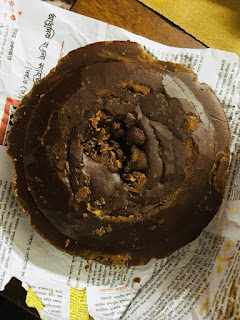Can the Fatty 'bow' and scrape Calcutta?#uncookedwords
Over the last few years the city has sedately hosted a steady influx of bouncy restaurants 'safely' fiddling with fusion and Pan-Asian cuisine. That’s laudable! Fatty-Bao broke into this budding lot having opened an outlet at the heart of Kolkata with much fanfare. I had my first brush with it at Bangalore where they had been around for a while.
It was late and we were hungry. Luck favours when exactly I want it to. The usher promised us a table in 5 minutes and delivered in 3. After a practice oft-followed on maiden visits, I asked the attending waiter to surprise with what they were good at and he happily obliged. Servings came in small sizes encouraging multiple orders as typical of Izakaya way.
Dodging the Sushi came first the Chicken Katsu Bao - a deliciously soft white Bao cleaved open with an inside slathered with exotic sauce and filled with fat shreds of crackling chicken, slaw and a stalk of scallion as garnish. Impressed with the Bao, I took to stealing one from my son.
As main course, the tasty ‘Egg Noodles with Chilli, Basil and Chicken’ lent courage to march on with ordering more. It was a platter I couldn’t rush through as the subtle notes were too toothsome to be overlooked, with Basil and Chilli infusing Asian drama into its savour. Dark and deep ‘Slow cooked Lamb Massaman’ tasted smooth with the coconut milk [my favourite] and basil invoking Oriental serenity to complement an imposing yet succulent lamb-shank sticking out of the bowl. I still had space to fill and thus came the ‘Udon Noodles with Lamb and Chilli’ after a recommendation by the Manager. Traditionally cooked, the dish manifested in its simplest form with Udon topped with pan-fried lamb shreds and vegetables – lucid and perfect as Sunday late-dinner!
In short – a swanky eatery with decent spread, chic decor and bustling with tiresomely talkative people.
So, when and why should I visit Fatty-Bao? To happily ‘eat’ or to socially ‘meet’?
The city is yet to conclude on that!
















